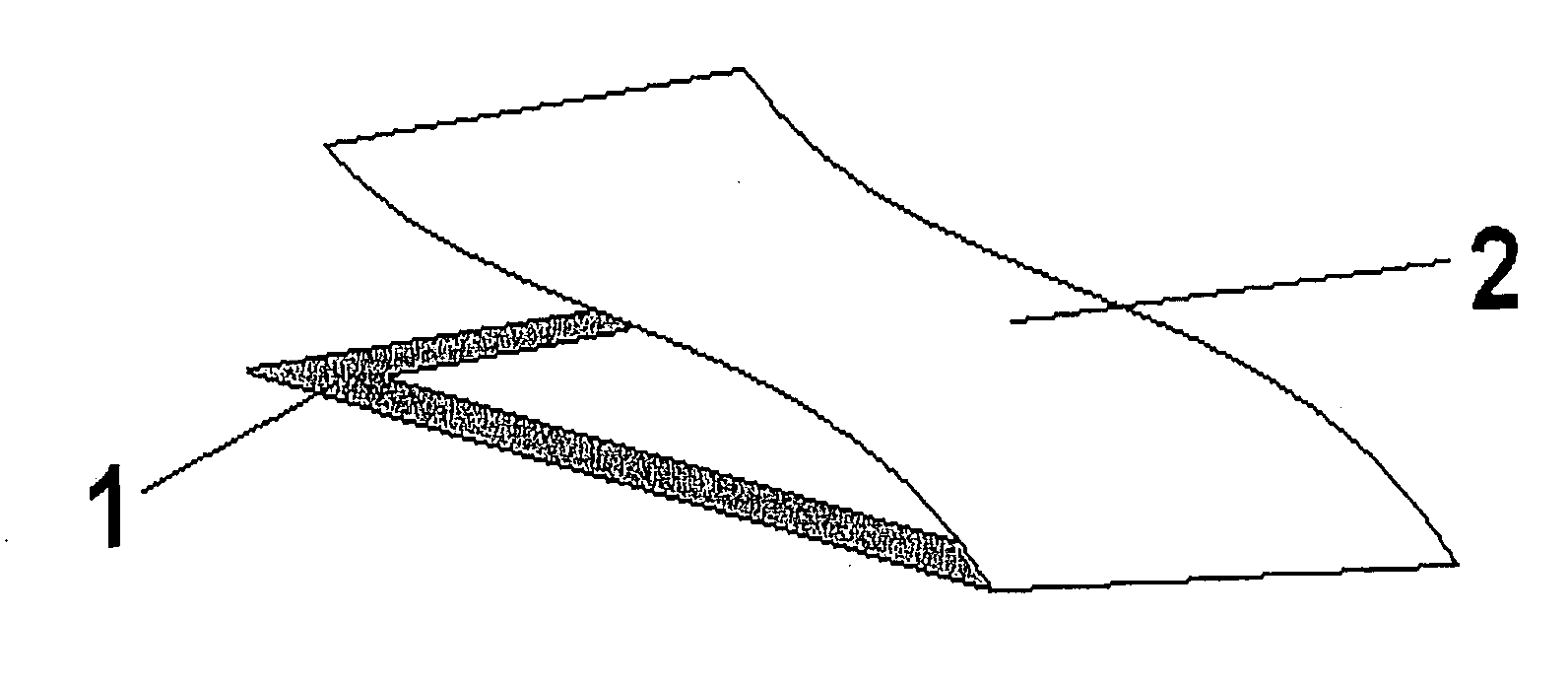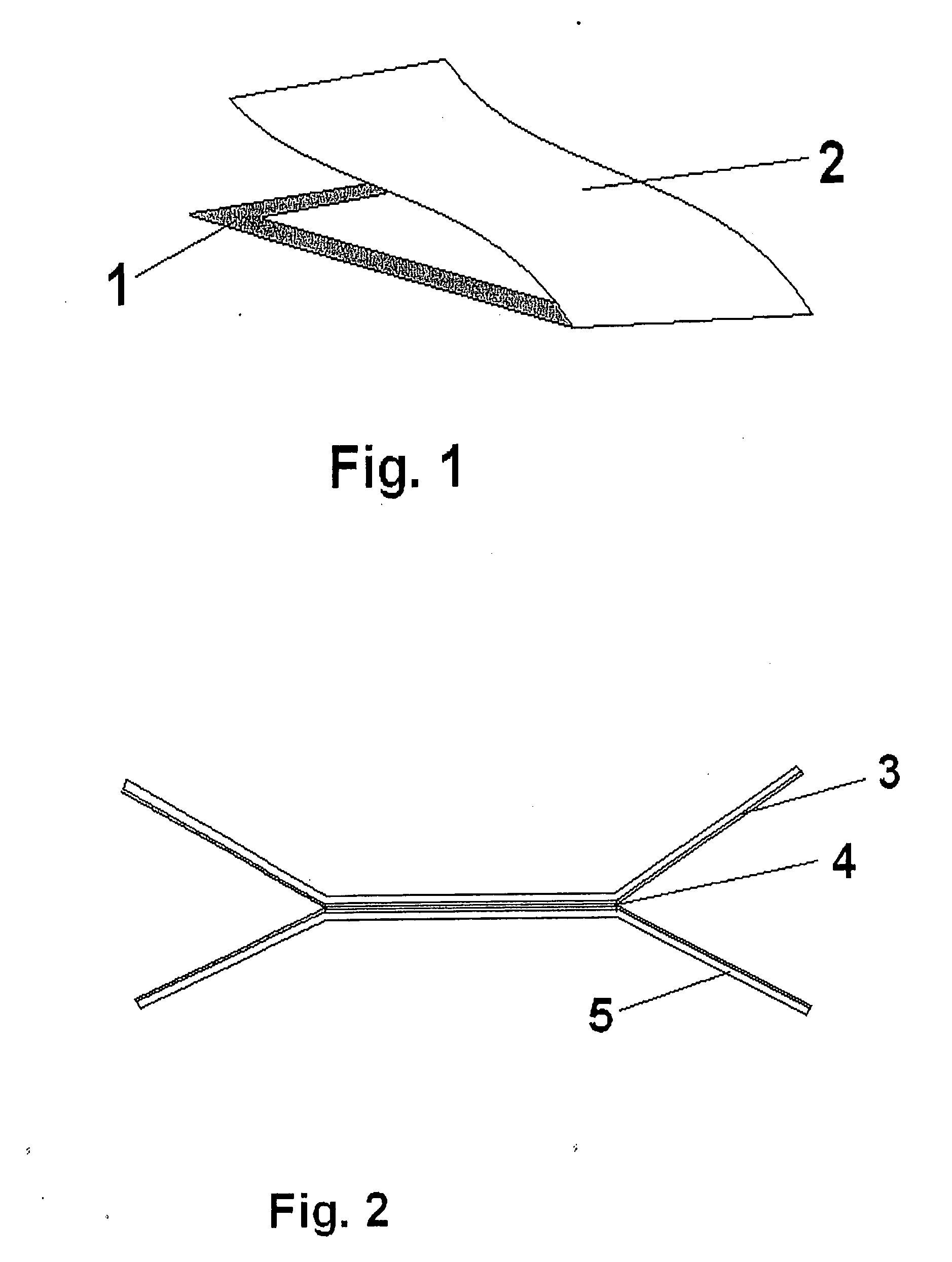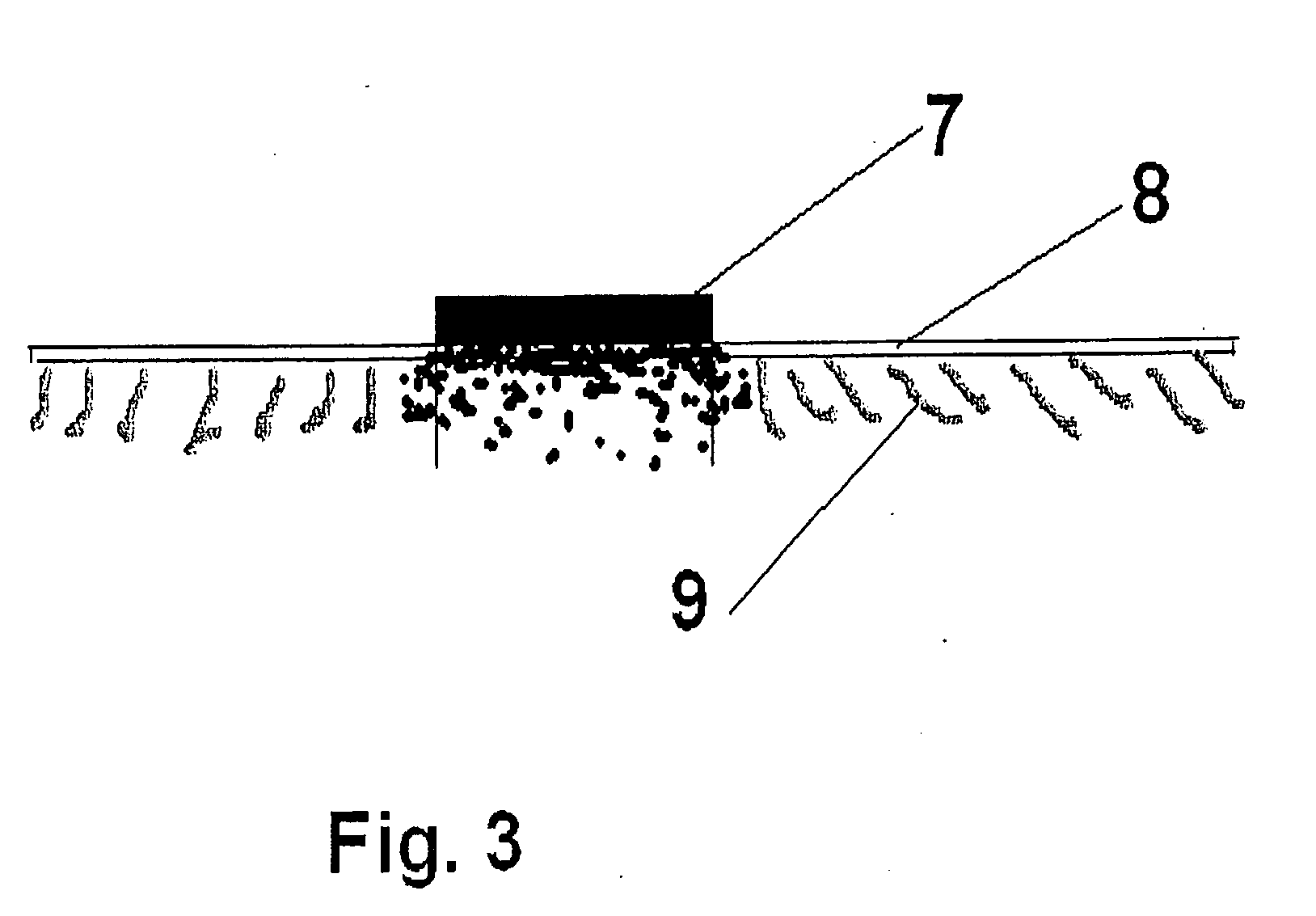Silicone oil-repellent paper product coated with a thermoplastic adhesive
a technology of thermoplastic adhesive and silicone oil, which is applied in the direction of heat-activated film/foil adhesives, identification means, instruments, etc., can solve the problems of marked reduction of the adhesive coating of paper products printed with laser printers, increased use of high-performance printers, and high printing speed
- Summary
- Abstract
- Description
- Claims
- Application Information
AI Technical Summary
Benefits of technology
Problems solved by technology
Method used
Image
Examples
example 1
[0068]100.0 parts of water[0069]0.3 parts of Dispex 100 (Allied Chemicals)[0070]35.0 parts of Shieldex AC 5 (Grace)[0071]15.0 parts of CaCO3, chemically precipitated[0072]15.0 parts of Mowiol® solution 80-88 10% (Clariant)
[0073]In 100 g of water, the substances in the sequence listed above are slowly stirred into a stirring apparatus running at high speed and are homogenized for 20 min.
[0074]Subsequently, the pigment slurry is mixed with 350 parts of Mowilith DC in a stirring apparatus running at low speed.
[0075]Using a roller blade, 4.5 g / m2 of the coating compound (dry weight) are applied to a 90 g / m2 woodfree paper and dried at 90° C. in the drying cupboard.
[0076]The specimen is sealed using the following parameters:
Time:2 secPressure:100 NTemperature:90° C.
[0077]The result is an excellent and unseparable adhesive bond between the paper sheets.
[0078]Using a roller blade, the coated specimen is coated with silicone oil (XEROX FUSER AGENT Type 8R 90 163). Absorption in the paper is...
example 2
[0081]100.0 parts of water[0082]0.3 parts of Dispex 100 (Allied Chemicals)[0083]35.0 parts of Shieldex AC 5 (Grace)[0084]15.0 parts of CaCO3, chemically precipitated[0085]7.5 parts of Lodyne® S-103A (Ciba-Geigy), diluted with water 1:10
[0086]In 100 g of water, the substances in the sequence listed above are slowly stirred into a stirring apparatus running at high speed and are homogenized for 20 min.
[0087]Subsequently, the pigment slurry is mixed with 350 parts of Mowilith DC in a stirring apparatus running at low speed. Using a roller blade, 4.5 g / m2 of the coating (dry weight) are applied to a 90 g / m2 woodfree paper and dried at 90° C. in the drying cupboard.
[0088]The specimen is sealed using the following parameters:
Time:2 secPressure:100 NTemperature:90° C.
[0089]The result is an excellent and unseparable adhesive bond between the paper sheets.
[0090]Using a roller blade, the coated specimen is coated with silicone oil (XEROX FUSER AGENT Type 8R 90163). Absorption in the paper is ...
example 3
[0093]100.0 parts of water[0094]0.3 parts of Dispex 100 (Allied Chemicals)[0095]35.0 parts of Shieldex AC 5 (Grace)[0096]15.0 parts of CaCO3, chemically precipitated[0097]7.5 parts of Lodyne® S-107 B (Ciba-Geigy), diluted with water 1:10
[0098]In 100 g of water, the substances in the sequence listed above are slowly stirred into a stirring apparatus running at high speed and homogenized for 20 min.
[0099]Subsequently, the pigment slurry is mixed with 350 parts of Mowilith DC in a stirring apparatus running at low speed.
[0100]Using a roller blade, 4.5 g / m2 of the coating (dry weight) are applied to a 90 g / m2 woodfree paper and dried at 90° C. in the drying cupboard.
[0101]The specimen is sealed using the following parameters:
Time:2 secPressure:100 NTemperature:90° C.
[0102]The result is an excellent and unseparable adhesive bond between the paper sheets.
[0103]Using a roller blade, the coated specimen is coated with silicone oil (XEROX FUSER AGENT Type 8R 90163). Absorption in the paper i...
PUM
| Property | Measurement | Unit |
|---|---|---|
| density | aaaaa | aaaaa |
| melting point | aaaaa | aaaaa |
| flash point | aaaaa | aaaaa |
Abstract
Description
Claims
Application Information
 Login to View More
Login to View More - R&D
- Intellectual Property
- Life Sciences
- Materials
- Tech Scout
- Unparalleled Data Quality
- Higher Quality Content
- 60% Fewer Hallucinations
Browse by: Latest US Patents, China's latest patents, Technical Efficacy Thesaurus, Application Domain, Technology Topic, Popular Technical Reports.
© 2025 PatSnap. All rights reserved.Legal|Privacy policy|Modern Slavery Act Transparency Statement|Sitemap|About US| Contact US: help@patsnap.com



